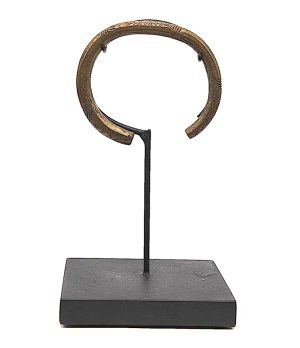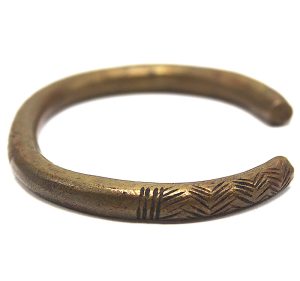SOLD Antique Yoruba Manilla Currency Bracelet, West Africa(3158)
$110.00SOLD
Manillas were commonly used by the Yoruba in the Coastal regions of Nigeria and along the Niger River. This thin simple round C-shaped manilla is decorated with incised linear designs on the outer round surface: it is centered on the top with parallel zig zag lines between a set of four parallel indentations which frame it. Each end also has zig zag indented striations. Simple, yet elegant, the bracelet is in very good condition, with normal wear, and pitting that verify its age and use. It comes with a wood metal stand.


